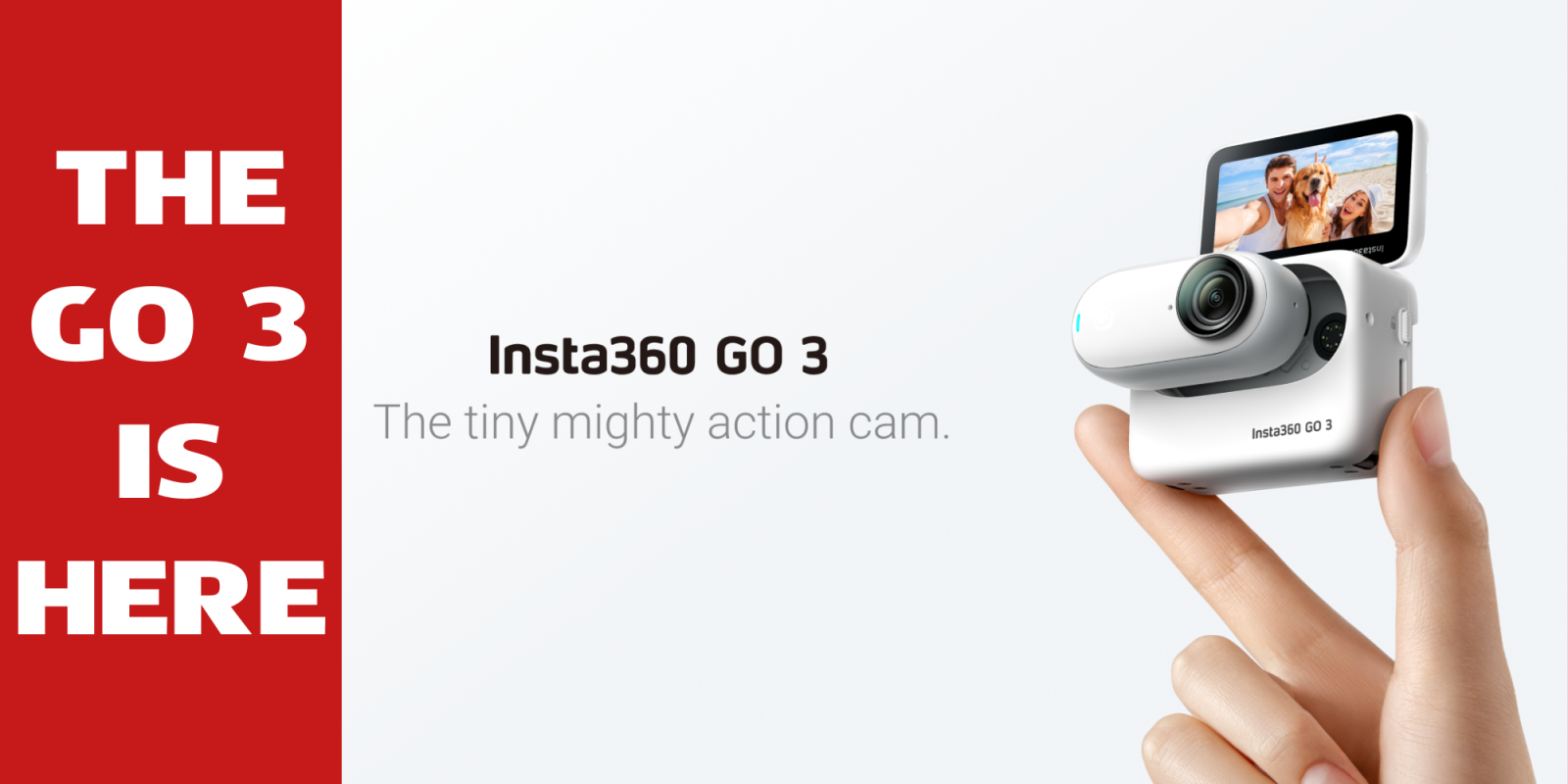
Insta360, the Chinese company that has revolutionized 360° video and stills for the masses, has just released its latest camera. It’s called the Go 3 – and it “goes” where no other Insta360 camera has gone before.
The Go 3 is an action camera designed for use whether you’re on a bicycle or motorcycle, skis, or even a submersible (providing you don’t exceed five metres). It’s also perfect for small drones. The Go 3 follows in the footsteps of its predecessors, weighing in at just 35 grams. But with better battery life than the Go 2 – and the new Action Pod, which brings a host of new features and turns it into a familiar form factor – this camera is a very significant upgrade. It shoots 2.7K using the H.264 codec at 80 Mbps; it has an F2.2 aperture and a 35mm equivalent focal length of 11.24mm, meaning it shoots super wide (though you can reduce fisheye). The price ranges from $379.99 to $429.99, depending on how much memory you want.
Action cam
The biggest difference between the Insta360 GO and the Go 2 line is this: The Go 3 has been designed as an action camera.
And that means the Go 3 comes as a system. It can dock with something Insta360 calls the Action Pod, and has a robust mounting mechanism intended to weather heavy-duty action. You can use the Go 3 camera on its own, using the Action Pod as a control system and monitor, or you can integrate the pair and use them as a single unit.
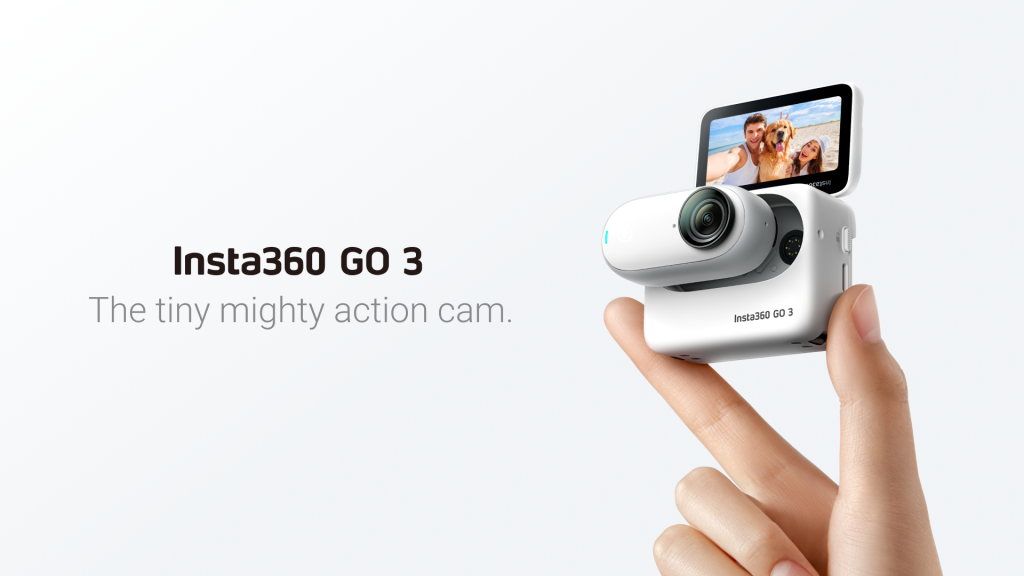
New locking mechanism
The Go 3 also has two tiny indentations at each end of its base. Those form one-half of a secure locking mechanism that allows the Go 3 to clamp into its mounting accessories. This is a big part of making the Go 3 more of a true action camera.
The previous Go 2 basically snugged up inside a plastic shell. And while that was adequate for many situations, it wasn’t the kind of mount you’d want if riding a dirt bike or jumping off a cliff in a wing suit. The new locking mechanism features pins that click into the base of the Go 3 and hold it very securely. You can see the metal arm on one side in the photo below. Like the previous Go 2, the Go 3 is also magnetic (more on that later).
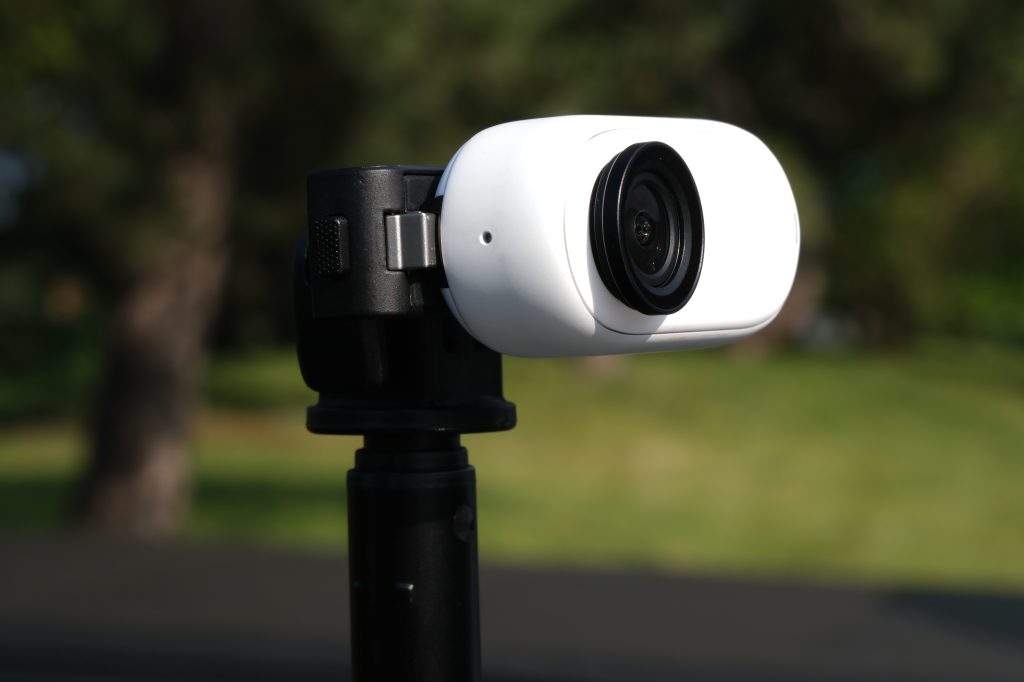
The locking mechanism is significant. But it’s the Action Pod that really changes the game.
Action Pod
The Action Pod is a small base about the size of a GoPro. The Go 3 locks into a concave cutout on the face of the Pod, turning it into a camera.
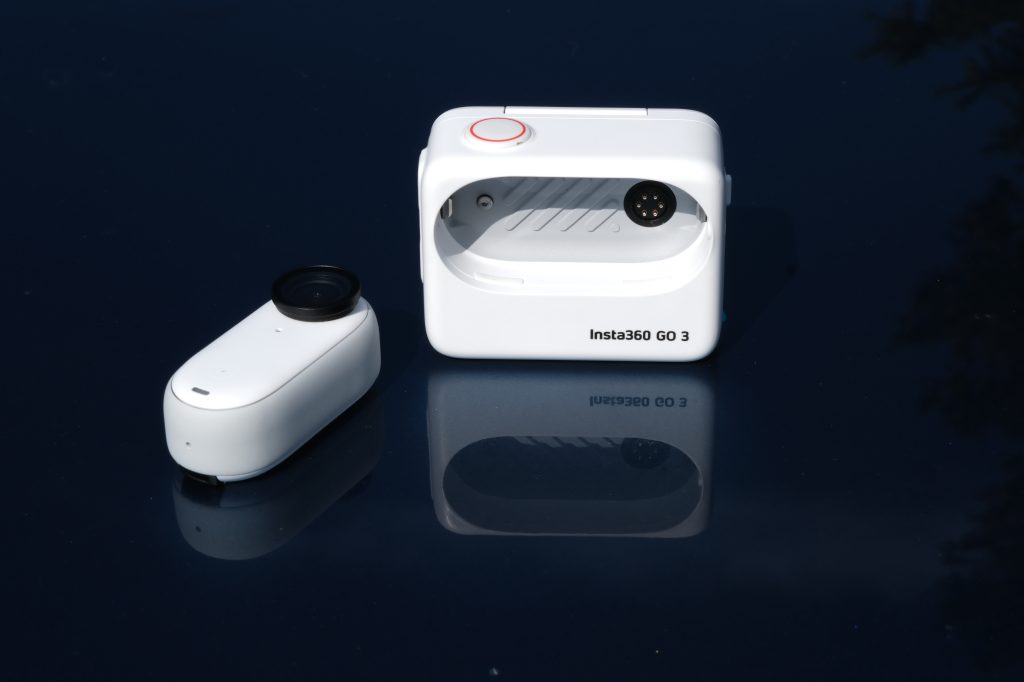
The interface includes six contact pins for communicating with the pod and charging the Go 3 on the go. Most importantly, the Pod has a hinged touchscreen display on the back. That means you can frame your shot without using your phone. Want a selfie? Simply clip the screen up 90°. You can also control the various functions of the Go 3 via the touchscreen. (We’ll get into those in a bit.)
In fact, Insta360 has a pretty comprehensive video outlining the new features. Let’s have at it:
This is a huge step forward from the Go 2, which had a charging case but not an integrated 2.2″ display. Unless you were monitoring from the Insta360 app, you really had no way of knowing with certainty what you were capturing.
The Go 3 can also communicate with the Action Pod wirelessly, meaning you can frame your shots, change settings, and start and stop recording using the Action Pod with the camera mounted somewhere else. Plus, the Action Pod’s internal battery – like the Go 2’s charging case, or an AirPod case – can charge the unit itself. Insta360 says the Action Pod can extend shooting time on a charged Go 3 to 170 minutes. That’s pretty impressive.
Using the Go 3 solo? It features dual microphones complete with wind noise reduction and can be controlled by voice. The unit has no limitations on clip length, and its internal 310 mAh battery lets you shoot for 45 minutes continuously without the Action Pod.
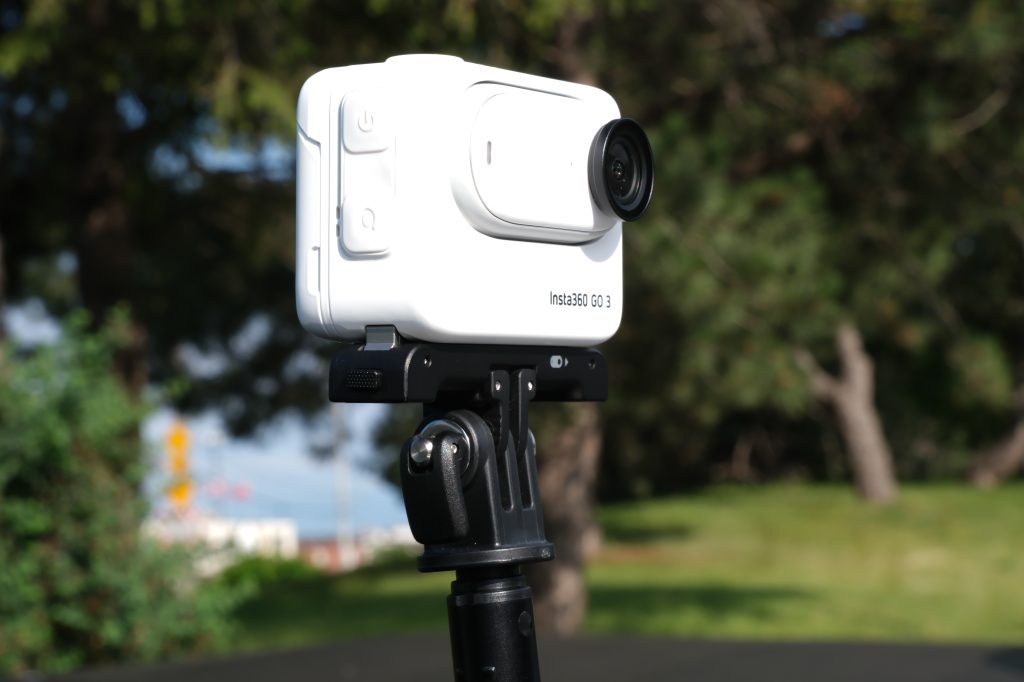
Functions galore
It wouldn’t be an Insta360 product without plenty of bells and whistles.
And here, the Go 3 shines in terms of options. Using the Action Pod, you can set the system into one of 10 very different recording modes – each with their own sub-menus for fine-tuning. You access these modes by tapping the Q button on the side of the Action Pod, then swiping through the following options:
Starlapse – for night shots, where you’re after star trails. Didn’t try this, but based on other Insta literature, you’ve got to be patient; it will take several hours to really get what you’re after.
Interval – Think of this as an advanced version of TimeLapse, where you have greater control over tweaking parameters.
HDR Photo – Looking for a High Dynamic Range still? Select this option to get the most out of the Go 3’s dynamic range.
Photo timer – Want to capture a group shot, or something else using a timer? The Go 3 allows you to select 3-second, 5-second, 10-second, 30-second, and one- or two-minute delays.
Video – Here, you have the option of selecting frame rate and resolution. The lowest resolution is 1080p (remember when that was the best?), 1440p, or 2.7k. Choose frame rates of 50, 30, 25, and 24 fps. (There is a higher frame rate accessible in the Slow Motion module.)
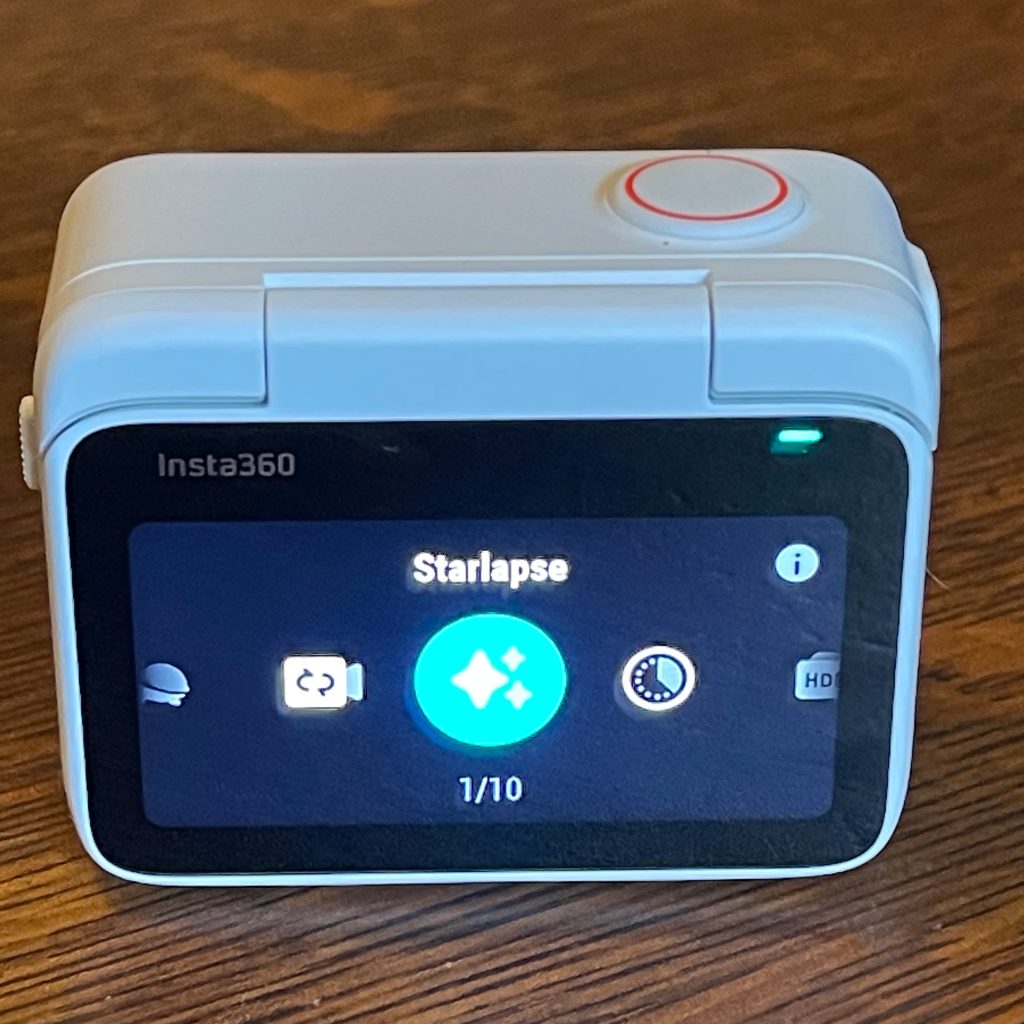
And more…
FreeFrame video – This mode allows you to shoot and then crop/export different aspect ratios after you’ve captured your material. Shooting for TikTok? Instagram? Facebook? You could export three different-tailored sizes.
TimeLapse – A sub-menu allows you to select 16:9 or 9:16 aspect ratio. TimeLapse captures still images. You can select the delay you want between shots; the file created for export creates a 1440P video at 30 fps.
Timeshift – This records video that can be quickly produce a speed-ramped finished product using AI.
Slow Motion – Want to slow things down? Choose 16:9 or 9:16, and capture 1080p at 120 fps.
Loops Recording – Lets you record repeated loops at a length you determine.
Magnetic attraction
Like the Go 2, the Go 3 is magnetic. And so is the Action Pod.
That means you have the option of sticking it directly against a metal surface, like the hood of a car – even on the clasp of a pet’s collar. The rear of the Go 3, on the magnetic side, has a textured surface that feels like it was designed to grip and not scratch – so we don’t think there’s a risk of gouging up the fancy paint job on your Tesla or McLaren.
Like the Go 2, the Go 3 ships with a magnetic pendant. Put that on under your shirt and the camera sticks to it like glue. You can get great POV shots using this pendant. It’s great because you don’t have to hold anything and there are no cumbersome straps. You basically forget it’s even there. (You also have the option with the Go 3 of mounting the camera either vertically or horizontally on the pendant, which is modified from the Go 2 pendant.)
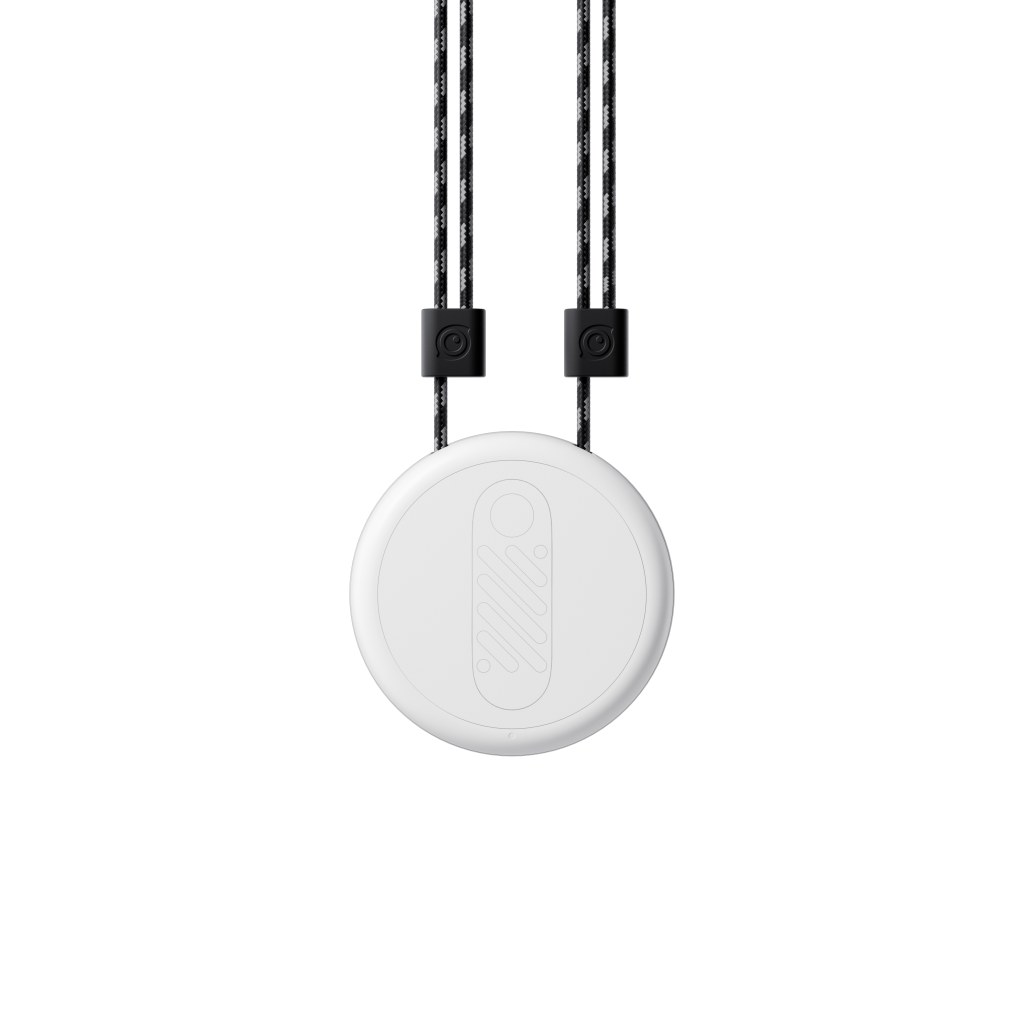
Attaching the Go 3 to the Action Pod happens with a satisfying magnetic click. There’s also a latch that hooks into one of those slots mentioned earlier to ensure the camera stays in place even if it gets jostled around a fair bit. (A small button on the side of the Action Pod must be pressed to release the camera.) Below is the magnetic Pivot Stand, which ships with the Go 3. Those two metal arms very securely lock the camera in place.
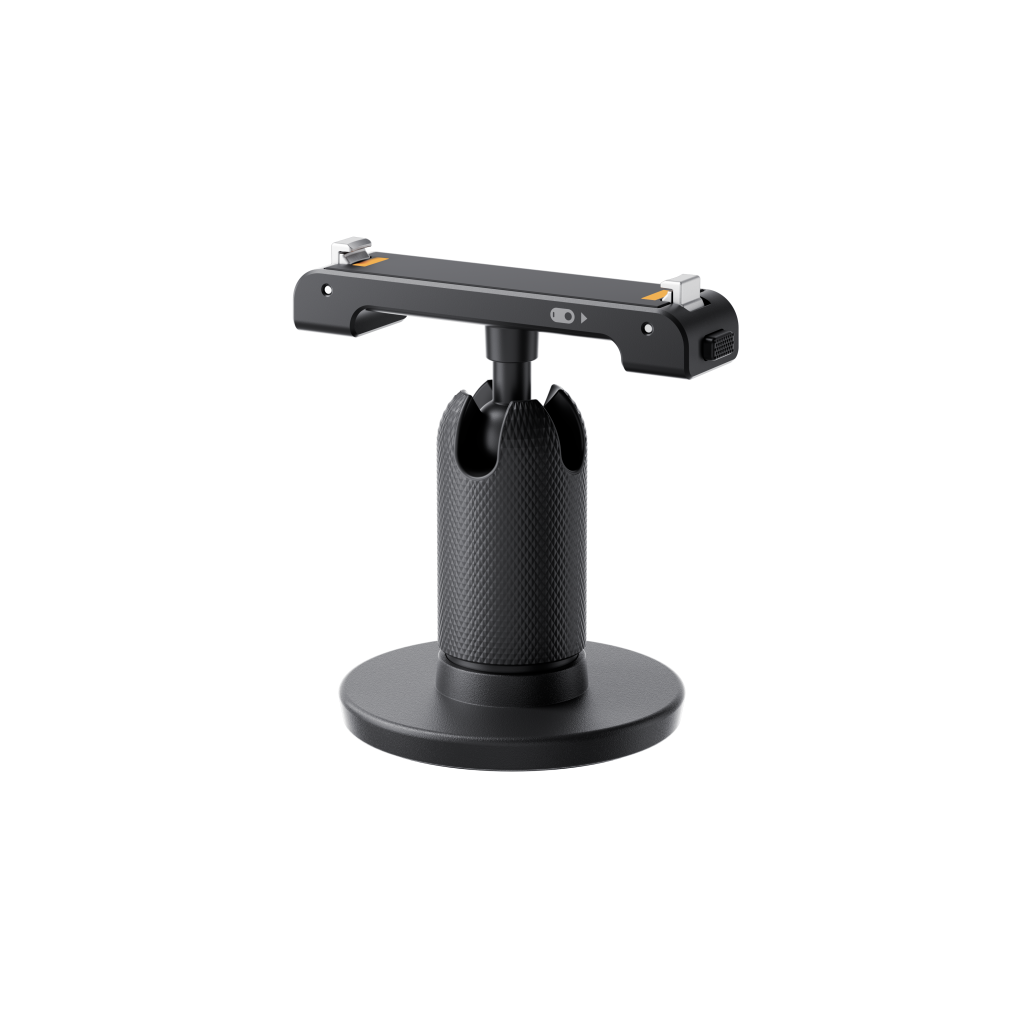
Oh – before I forget. You know those threaded bolts with the little handles often used for mounting action cameras? The ones that GoPro initially came out with? Well, the Insta360 engineers were at it again. They have replaced that with a system that parallels the quick-release levels on bicycle wheels. Simply insert a rod, give it a twist to lock it home, then give the lever a single twist to tighten up any mounting accessories. It’s pretty slick, very solid, and is faster than fidgeting around with the old system.
Using the Go 3
Well, it’s a snap. Like most Insta360 products, the menus are clearly laid out and intuitive. To start recording or capture an image, either press the “record” button on the Action Pod (regardless of whether the Go 3 camera is in the Pod), or simply give the base of the Go 3 a squeeze. A single squeeze starts video; a double-squeeze fires a still.
The Go 3 comes with a generous internal memory of 64 GB. That’s enough to capture nearly three hours of 2.7k video before you’ll need to offload.
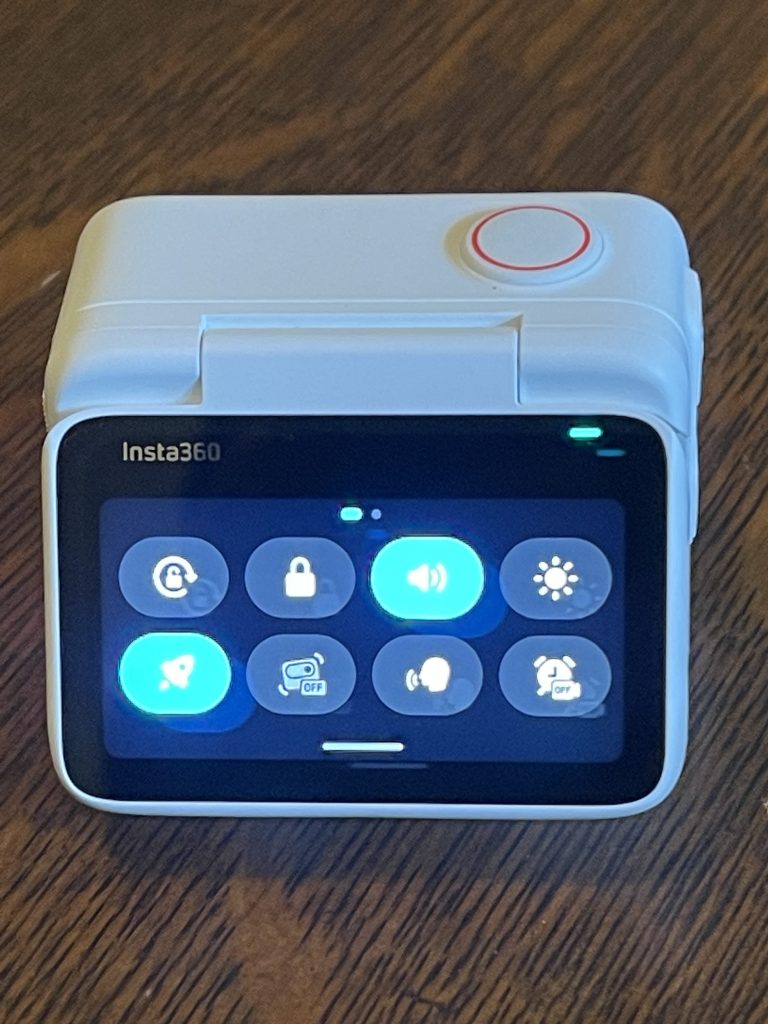
Insta360’s FlowState stabilization and Horizon Lock both work very well; footage was very smooth, even when mounted on the dash in a car on Toronto streets (if you’ve been to Toronto, you’ll know our streets aren’t the smoothest). Setting up a TimeLapse was also a breeze, and Action Pod’s touchscreen helpfully provides you with a running tally of the length your eventually TimeLapse will last.
Of course, one of the great use cases for the GO series is mounting these tiny cameras on smaller drones. Mini Cine-whoop style and small racing drones are a perfect fit when you want to keep the weight and form factor down. And, really, 35 grams? It’s just a little more than an ounce, with terrific quality for its size and weight.
Downsides?
Well, a few things caught my attention.
The first was when I noticed a scratch on the touchscreen. I am generally pretty particular with how I handle gear. But at one point during the review process I grabbed the camera and one of the metal mounts in the same hand. That’s the only place I can think of where the screen got scratched. But here’s the thing: There are super-hard types of glass out there (you may well have some on your smartphone) that are pretty much impervious to scratches. This screen is not. If you are going to buy the Go 3, we *highly* recommend you purchase the optional screen protector. I wish Insta360 had chosen a harder glass for this product.
The screen otherwise does the job, with resolution and great responsiveness to touch. There is some lag when viewing live – move the camera and it takes a moment for the screen to catch up – but that’s not a big deal. The screen would be even nicer if the image stretched to its edges. Currently a black border surrounds the image, and you find yourself just wishing the visible screen used up that extra real estate.
One other minor point caught my attention.
With the Go 2, Insta360 pointed out that you could mount the camera vertically on an extension stick and slide the camera through tiny openings – say, a teacup handle – for some pretty crazy shots. I remember messing around with this and getting some great stuff. The hardware the Go 3 ships with, however, forces you to mount the Go 3 horizontally in a “T” fashion, meaning you’d need an opening that would accommodate the entire width of the camera plus the mount.
There could easily be a workaround here to allow for those cool shots, and hopefully Insta360 will release a mount that allows for vertical mounting in future. We were in touch with our contact at Insta360 and they’ve heard similar feedback from others. It seems possible, if not likely, that Insta360 will release a new mounting bracket down the road to address this.
Don’t sweat the small stuff
To be fair, the complaints I’ve raised are relatively picky (though I’m still bummed about the screen scratch). In the Big Picture, the tiny Go 3 – along with the Action Pod and the new mounting hardware – gives users options they simply didn’t have with the Go 2.
The Go 3 comes in three models, depending on how much memory you want:
$379.99 US for the 32GB version
$399.99 US for the 64GB version
$429.99 US for the 128 GB version
We’re tempted to say that 64GB is probably all you’ll ever need. But when you look at the fact memory is not user-swappable, the extra $30 probably seems worth it. We haven’t heard many people complain about having too much memory, only too little.
Drone DJ’s Take
We’ve followed Insta360 products for many years now, and have always been fond of its products. The Shenzhen company has done a great job of bringing 360° cameras to the masses, and continues to innovate with products like the Go series.
The Go 3 represents a substantial jump in capabilities, battery performance, and versatility from the Go 2. If you like the idea of a hybrid system – where you can use a tiny camera in one scenario and the full Action Pod system in another – the Go 3 system is a terrific option you just won’t find anywhere else.
But if you’re looking to save some money – and prefer using the smaller camera on a drone or on your person – you’ll still be well served by the Go 2.
Finally, we’re working on a video to show off all the pros – and those minor cons – of the Go 3 system. Stay tuned.
FTC: We use income earning auto affiliate links. More.






Comments